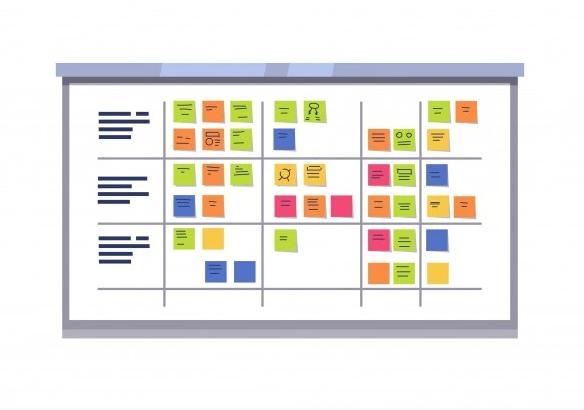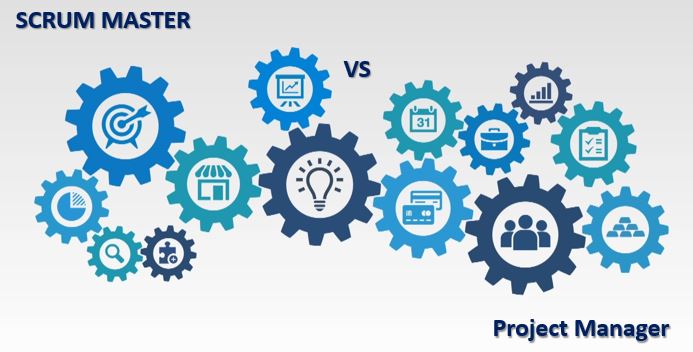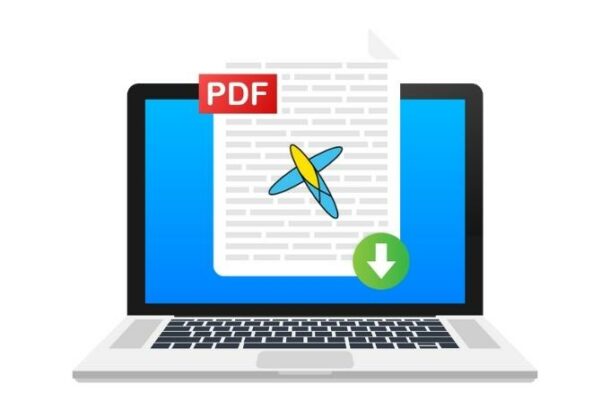
by Krishna Chodipilli | Jul 26, 2022 | Scrum Training
The standup meeting & Agile team meeting
The daily scrum, or daily standup meeting, is an essential part of the daily agile ritual and a defining part of the scrum framework; it can either enhance or undermine a development team’s functionality and effectiveness over time.
The impact of the coronavirus on the workplace has forced management and team members to reconfigure many traditional agile processes and meetings, but especially stand-ups. With development teams often distributed across multiple time zones, a new vision and methodology for this in-person standup ceremony is taking shape.
Normally, the daily standup includes a facilitator, sometimes the product owner and stakeholders, and fewer than 10 team members engaged in collaborative projects. Every day, the entire self-organizing development team affirms their understanding of how they will work together during the next 24 hours to produce the increment anticipated at the end of the sprint. The template for this event may be organized as a series of questions or it may lean toward discussion. That’s up to the team and the scrum master.
Because progress requires team commitment and full engagement, common mistakes made by agile teams can be avoided if we follow the meeting agenda, identify repeating issues or impediments, attend meetings daily, establish whose turn it is to speak, and clearly show the whiteboard or kanban board.
During the meeting, a Kanban task board can organize a development team review and assessment, with items nearest completion discussed first. Before the meeting, team members will reflect on their individual progress during the previous 24 hours, and be able to bring clear questions to the standup. If the 15-minute format becomes a lengthy discussion, the facilitator, usually the scrum master, will propose a time for further discussion and follow-up after the standup is concluded.
This in-person ceremony— where everyone literally stands — should last no more than 15 minutes. An entire team is now likely to include remote team members, and this agile evolution requires careful planning.

Respect the time zone
Agile problem-solving with distributed teams requires careful attention to planning and meeting methodology. For a whole team to be present, standup times must align with the time zone location of each remote team member. Be sure to add adequate video conferencing lines and provide a clear meeting agenda at the beginning of the standup — or before the meeting, so everyone’s questions are well-prepared and on point.
If commitment to the daily stand-up is impossible for every member, consider holding a weekly stand-up. For the sprint retrospective, a webinar works.
Why hold standups every day?
At the daily scrum meeting the development team will discuss the progress of their work toward the sprint goal. Part of an incremental process, daily coordination among scrum team members ensures that everyone has an accurate overview of sprint planning, is familiar with questions their colleagues have raised, recognizes obstacles in the way of progress toward the definition of done, and has insight into the work of other team members. It’s a scrum huddle ready to usefully measure team efficiency and progress by looking at, for example:
- Sprint backlog items and their order in the queue
- Work in progress
- Work-ready for review
- Work in review
- Software is ready to test
- Software being tested
- Work-ready for acceptance
- Work accepted
This workflow checklist queue can gauge the software development team’s efficiency with some precision and identify impediments to progress toward the sprint goal.
The stand-up meeting is a development team ceremony with a clear agile goal: a check-in to examine progress made by agile teams toward the sprint goal and toward completing the work in the sprint backlog. It is in many ways a status meeting to produce a status report.
In a fast-paced structured meeting, team members get a chance to help each other by removing blockers. In the virtual standup remote teams can evaluate their workflow and follow-up, ask questions about processes, point out and address impediments to collaboration, and keep up to date on user stories.
The development team sets the place, time, and the agenda for the standup, focused always on the sprint goal and resolution of any impediments to progress. Once established, the place and time should be the same for all future daily standup meetings and always scheduled during the workday.

A key ceremony
The daily standup is a key ceremony in the scrum framework that, when well run, ensures scrum team focus on meeting the sprint goal and the agile commitment. Learn more about agile standups, daily scrums and more with our Agile Training courses from Leadership Tribe today.
by Krishna Chodipilli | Jul 8, 2022 | Agile Coaching
What is an agile coach ?
When an organisation adopts agile practices, many things change: Efficiency improves as redundant and unnecessary processes are eliminated, workflows change, and there may be rethinking about selected projects. The agile coach raises awareness and guides product owners and individuals through the process. The coach mentors each agile team or team collaboration as they implement agile methodologies within the agile framework.
The agile process holds in balance two things: dynamic, often out-of-the-box thinking and adherence to a clear set of overarching organising principles. This balance is unlikely to occur spontaneously, no matter a team‘s intention, which is when the agile coach is asked to step in.
The agile coach has the training and experience to ensure a productive balance between the work of the agile teams and the interests of the company. The agile coach knows how best to focus the work on both sides of this relationship. The goal is always to facilitate and produce fast and successful improvement.
An agile team may include a facilitator, scrum master, kanban coach, or Certified Enterprise (agile) Coach (CEC), and all draw upon aspects of agile coaching. But there are differences. While scrum masters and other agile team facilitators focus on a single team or a small group of teams, the agile coach has a much larger mandate:
The agile coach works on and with multiple levels of an organisation, not just with the agile team. Because the purpose of agile is to improve and strengthen a whole enterprise, the agile coach sets the vision and goals; implements the agile mindset and agile principles in re-designing the organisation; forms and informs agile teams; manages communications; builds and supports the distinctive iterative culture; and facilitates meetings and events.
How can I become an agile coach?
Agile coaching certification
First-level certification
First-level certification for the agile coach requires a moderate level of experience. The Scrum Alliance CSP®, ICAgile ICP-ACC, International CoachFederation PCC and ScaledAgile SP certifications will confirm your measurable professional coaching skills.
An agile coach needs the skill, experience, curiosity, and passion to coordinate the roles, responsibilities, and activities of an agile software development team. Solid coaching experience begins at the entry-level, with certified training courses, experience at every team level in order to gain competencies, mastery of scrum and stand-ups, and facility with the fundamentals of agile processes and agile ways.
Become an agile team facilitator and participate in stand-ups. You’ll interact with stakeholders on behalf of the team when there are impediments, you’ll practice relationship skills, and you’ll be building the agile coaching experience you need.
Another good option on the agile coaching career path is to join an agile team as a software engineer. You can become a scrum master, then an agile team coach. A software engineer already has the know how to understand technical development team issues.
Master certification
Master certifications require demonstration of high-level competence and significant professional coaching experience. The Scrum Alliance CTCSM or CECSM, ICAgile ICE-AC, International Coach Federation MCC, and the ScaledAgile SPCT certification will confirm your skills and expertise.
Credentialed Agile coaches have years of experience with different Agile methodologies, such as Scrum, Kanban, and Scaled Agile Framework (SAFe). They also have knowledge of and experience with various enterprise agile frameworks, including Scaled Agile Framework (SAFe), Large-scale Scrum (LeSS), and Disciplined Agile Delivery (DaD). A CEC typically coaches at the executive leadership level of an organisation and can facilitate a full agile transformation.
Agile project management with an agile coach
When a company decides to rethink their management style through the lens of the agile mindset, their first step is to engage an agile coach. An agile transformation and agile delivery involves all stakeholders and every aspect of product management throughout an organisation.
Keep in mind that, to fulfil the agile coach role, you have to define the parameters of your own agile coach job. In contrast to the certified scrum master, whose function is clearly defined, the agile coach’s role straddles teams and departments. As has been pointed out elsewhere, if the company knew what to do next, it wouldn’t need an agile coach.
The agile methods skillset of every agile coach includes tactics to help teams and management remove biases, to implement agile processes with an eye to diversity, and to evaluate metrics from a place of invitation, instead of a place of confrontation.

Your agile coaching career begins now
We can’t say this enough: Look for every opportunity to gain experience. Take on roles as scrum master, agile facilitator, and every aspect of project management open to you.
Wherever you start, be sure to connect generously within the extended organisational environment. Find a mentor and learn everything you can from every agile coach. Practice your own coaching skills with anyone who will tolerate you: You’ll learn how to work with anyone and everyone. Read about agile, take the training courses, and learn everything you can about product management and organisational design.
When you know you’re ready, apply for a role as an agile coach — and always stay curious and keep learning. Learn more about agile coaching and planning with our Agile Coaching courses from Leadership Tribe today.
by Krishna Chodipilli | Jul 5, 2022 | Agile Training
How better to define and respond to human needs than in human-centric ways? From this perspective, solutions to design problems may be accepted or discarded based on their measurable real-life viability.
User experience design (UX) is the best way we know for a design team to ”think outside the box” at every stage of the development process. When grappling with a complex problem in a UX design process, empathy strengthens the team‘s capacity to arrive at innovative solutions. It ensures that the team is able to set aside their own assumptions about the world, ready to gain insight from the point of view of real user experience.
The UX design team will take a problem statement and confront it with every tool from the worst possible idea to the best innovative solution. The Hasso Plattner Institute of Design at Stanford (aka the d. school) has organised the work of this dynamic design process into five core stages:
Empathise
The first stage in the design thinking process is to empathize with your users’ needs — their human needs. Every design problem you‘re asked to solve will require user-centric research. You‘ll need to understand the human-centric ways that users engage with or respond to the product and it‘s place in their daily lives. Set aside your own assumptions about both the product and the world. Step back and consider what the user is looking for and the everyday context that informs their choices.
An empathy map can be a powerful organising tool for a UX team. Collected input, such as personas, data, and insights gained from customer interview responses, helps sharpen focus on the user in the user story.
Define
The second step in the design process is to define the users’ needs and to identify design problems that fail to address those needs. The human-centric ways the team has already identified in the first stage will open doors to problem-solving possibilities. The team will take information gathered during the empathize stage, analyse their observations, and produce problem statements. Personas created in this phase will help keep the work human-centric as the team proceeds to ideation.
Ideate
With user needs and problem statements clearly defined, the design team is ready to move into the ideation stage. The work of this phase is to challenge assumptions and brainstorm ideas. The methodology of the ideation phase demands that the team consider a problem statement from various perspectives, then to ideate innovative solutions. No idea is off the table in this process as the team considers potential solutions and alternative ways to view the stated problem.
Prototype
In the prototype stage of the design process the design team produces scaled versions of the product (or specific features of a product) to test solutions emerging out of the ideation phase and extensive user research. Evaluators share and rigorously test the viability of these prototypes with a small group of people outside the design team. In this experimental phase solutions are applied, one by one, then accepted, improved, or rejected based on the users’ experiences with a specific prototype.
By the end of the prototype stage, the design team will have a clear idea of a product’s limitations and definable problems — and of how real users may behave, think and feel when they use it.

Testing Phase
The final stage is the testing phase, where the usability of the product is rigorously interrogated by design evaluators who use the best solutions accepted in the prototype stage. Because the design thinking process is an iterative process, product testing may be used to redefine or reframe problems and many times to return a product to a previous stage in the development process.
The increased understanding gained in the test phase will help the team focus on the conditions of product use and how people think, behave and feel towards the product. It may also lead the team to produce more iterations to include refinements, in order to apply and rule out alternative solutions. The ultimate goal of testing is to understand as clearly as possible the balance between a working product and its value to end users.
What are the roots of design thinking?
Founded in 2004, the Hasso-Plattner Institute of Design at Stanford is a key architect of the iterative process of non-linear design thinking. The founders of the Institute built upon the 1969 work of American sociologist and psychologist Herbert Simon‘s The Sciences Of The Artificial, and Simon’s model led to the five-stage process described here.
Leadership Tribe has embraced the 5-stage model in Certified ICAgile and Leadership Courses. We are a globally trusted Agile Training Partner. You can also read more about design thinking along with why design thinking is important overall.
Learn more about agile estimating and design thinking with our Agile Training courses from Leadership Tribe today.
by Krishna Chodipilli | Jun 6, 2022 | Leadership And Management
The Agile Manifesto points out that “The most efficient and effective method of conveying information to and within a development team is by means of face-to-face conversation.” In constant conversation, using program backlogs, the scrum and scrum master, tech talent and all stakeholders, we commit to the agile planning process. The goal is to produce tested and timely iterations that enhance business value.
Now, step back a bit for a view of the Scaled Agile Framework (SAFe) set up to manage larger projects with intricate hierarchies. Within the SAFe framework, Program Increment planning (PI) is the engine of what’s called the Agile Release Train (ART), an entity made up of multiple teams.
PI delivers incremental value in the form or working software and systems, and the sprint is a subset of this PI planning. PI sounds like a sprint but, as those train metaphors hint, the difference is one of scale: In effect, PI is to an Agile Release Train (ART) as an Iteration is to the Agile Team.
Five to 12 teams work together on the ART, compared to a single agile team conducting a sprint. Face-to-face conversation — including remote PI planning in this time of Covid — ensures that all team members share the product owner’s goals. In the sprint, each one- to four-week session engages one highly-committed team. Compare this to the PI planning which maps four sprints for completion in eight to 12 weeks.
Within the PI SAFe project management divides the development timeline into a series of iterations. The SAFe will identify dependencies, clarify and strengthen organizational readiness, and foster cross-team and ART collaborations.
Like a scrum master, in pre-PI planning the release train engineer (RTE) outlines the PI planning process and how it works, what input is expected from the teams and what they are expected to produce, and overall PI objectives.

The PI planning process addresses 3 major considerations:
- Organizational readiness: Do the teams, trains, and business owners agree on the PI priorities?
- Content readiness: Is each agile team organised around a scrum master and product owner?
- Logistics readiness: Are real time audio and video channels available to support all attendees and ensure a successful PI planning event?
During the PI planning event the RTE may uncover barriers to project completion that can only be resolved by renegotiating with management, stakeholders, and the business owner. The scope and features of the product may change in this process.
A program board will be set up on site to highlight any new delivery dates, feature dependencies between teams, and targeted milestones. Once program risks on the board are assessed and addressed, teams are ready to hold a confidence vote to affirm their capacity to meet PI objectives.
5 notable differences between the PI release and the sprint iteration:
- The plan for the development team: Sprint planning involves one agile team; PI planning shapes the work for an entire 5- to twelve-team agile release train (ART).
- Outputs: The sprint and scrum development process targets delivery of a working product iteration at 1 to 4 weeks; PI development and the ART aim to meet business goals in 8 to twelve weeks. At completion, both sprint and the PI teams hold retrospective events to review and evaluate what they have accomplished and how well targets have been met.
- Inputs and the road map: A sprint development team responds to daily input from business owners and all team members to produce iterations as quickly as possible; PI value is delivered by multiple teams and requires high-level roadmap planning to sustain the work over a longer period of time. The business context in the PI may be more broad than in the sprint.
- Commitment levels: The sprint is intensive and requires a high level of commitment from team members, stakeholders, and business owners; PI is an emergent plan that requires a fluid level of commitment from the development team, product management, the systems architect (IT expert), and the release train engineer.
- Making the development plan: Sprint planning takes 2 to 4 hours; PI planning involves more teams and team members, and takes 2 days.
PI management review and problem-solving
- Planning events: Pre-PI planning will describe the context and inputs sought for individual ART planning events. Post-PI planning points out the results of the ART that best contributed to project goal fulfilment — the solution.
- The draft plan review describes the project’s scope, the teams in place, and the resources available to complete team tasks. The Solution Train Engineer (STE) makes sure the results of each management review and problem-solving meeting are implemented.
- The retrospective: PI planning session team members may rework their plans in order to achieve high confidence in what the teams have accomplished. The RTE leads the retrospective for the PI planning event, as at the finish of a sprint, to evaluate what went well, what did not, and what post-PI planning should inform the next PI.
Benefits of PI planning
Agile development practices in PI planning are always responsive to variations and changes in cross-team decision making, the introduction of new features, draft plan and final plan review, and business goals.
Benefits arise from successful PI planning in the architecture vision of the agenda: Each team in the ART is committed to their collective PI objectives and to producing the business value as identified by the business owners.
A useful tool in PI planning is the program board. This visual compilation of data makes clear to all team members the working relationships in the ART. The program board may be used as a template for team plans, including team breakouts, and to advise the ART of new PI planning meeting or upcoming PI. The board will mark progress, new feature delivery dates, dependencies, and any issues of product functionality.
Leadership Tribe will help clients design and set in motion their business planning journey from start to finish. Innovation with minimal disruption is our specialty. Learn more about digital transformation, planning and executive leadership with our Agile training online courses from Leadership Tribe today.
by Krishna Chodipilli | May 2, 2022 | Agile Methodology
In contrast to other project management methodologies, the essential strengths of the agile software development process are teamwork, a focus always on user experience, and a flexible response to new circumstances as they arise.
Transparency, agility, and forward collaborative motion optimize teamwork throughout the development cycle. Agile’s iterative approach contrasts the plan-to-product linear arc of traditional project management methods, such as Waterfall.
The Agile Manifesto draws from the agile principles guiding the process that has become an industry standard for efficient software development. The manifesto highlights four primary tenets: Individuals and interactions over processes and tools; working software over comprehensive documentation; customer collaboration over contract negotiation; and response to change over following a plan.
Agile methodology & project planning
Agile methodology starts with sprint planning in a discussion of how best to achieve product development goals. The meeting includes the product owner, stakeholders, the scrum master, and other members of the development team.
The release plan for the sprint will determine how many sprints are needed in the project lifecycle in order to produce the deliverable as soon as it fulfils the definition of done.
- At the planning meeting for each initiative, two questions are central: How can we best produce a user-friendly new product or enhance an existing product? What does the user want?
- What is most likely to impact delivery of the iteration? What does the development team need? What are the dependencies that could impact product development — and how best can we manage them?
- Early in the software development process the team will focus on those iteration features that involve the highest risk and produce the highest value.
- From previous experience, the team will decide on the amount of work they can complete in a sprint and, perhaps, implement a Kanban board or burndown chart to be able to eyeball their real-time daily progress.
- To keep end user needs always in sight, the product owner and the team assemble and evaluate a list of user stories about the release.
- The product owner or stakeholder will add a product iteration at the outset to help clarify the goal of the team during the usual 2-week sprint.
- The product owner will add user stories to the product backlog and make sure iterations are performed until all user stories have been included in the development process.
- At completion, each iteration of working software is tested by end users. They evaluate the test results with team members, the product owner, and all stakeholders to secure feedback and continued engagement with the work of the project.
Agile project management
An agile roadmap helps frame the project management lifecycle from initial planning to completed deliverable. To accomplish the task, the transparent and flexible agile process relies on a framework set in clear principles and methodologies.
The agile project follows the agile path
- Description of the initiative by the product owner and any stakeholders and assembly of the self-organising agile project team;
- planning of development steps that draw from the backlog of user stories and setting out the development team workflow, the scrum;
- execution of the plan, with commitment to track progress by means of scrum events, achieved milestones, respected dependencies, Kanban boards, and new information;
- production of a working iteration of project deliverables;
- testing and evaluation of the iteration’s performance; and
- completion of the development process with a working product.
The roadmap is a core project management tool in the agile planning process. The outcome is that, because the architecture of the software is sound, it can be maintained and continually adapted to changing software needs.

A note on the scrum
The scrum is where the goal of agile project planning meets the skill and focus of the development team. In the ever-adaptive scrum environment, the team begins the development process with features drawn from the product backlog list of deliverables to be included in the final product. From the standup daily scrum, to software iteration, through to the sprint retrospective, agile teams work collaboratively under the eye of a scrum master whose task is to make sure there are no obstacles to the team’s success.
Agile is the industry standard
From business to logistics to Human Resources to portfolio management, the agile framework and agile approach to software development projects have become the industry standard.
From the point of sprint planning, the responsive whole-team performance engaged to produce each agile iteration is remarkable. The focus of the Agile team is to successfully develop the most functional software features possible, based on the product owner’s wants and with full engagement of the development team members’ abilities. Learn more about scrum teams and digital transformation with our Agile Training & Scrum Training with online courses from Leadership Tribe today.








